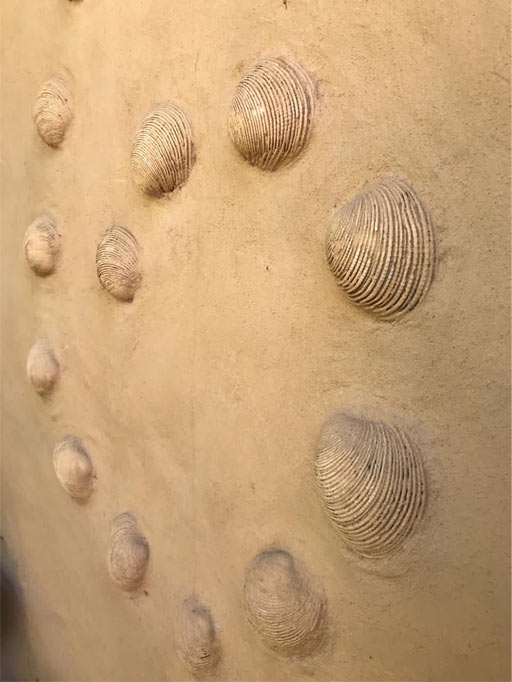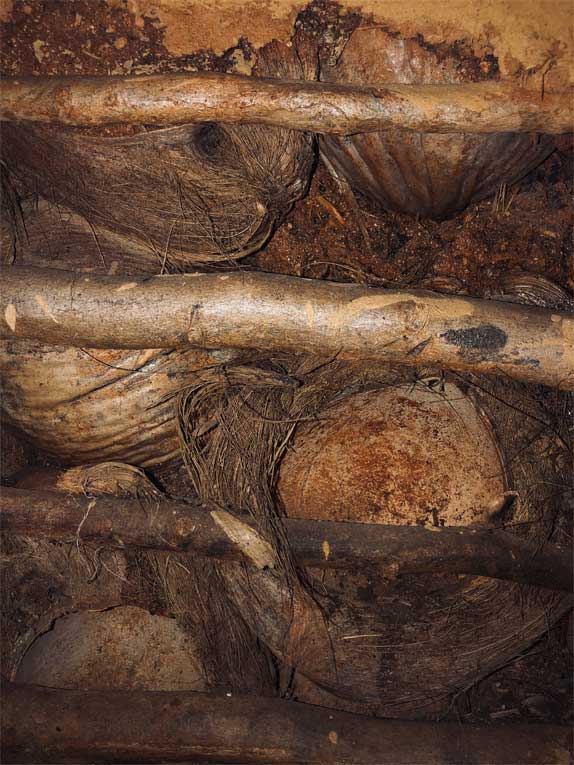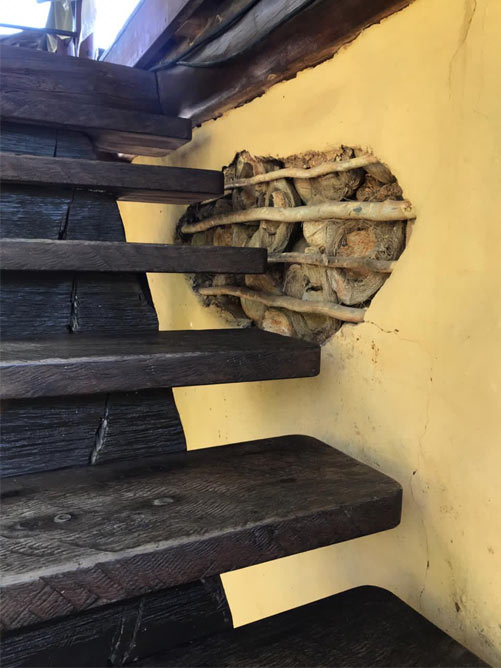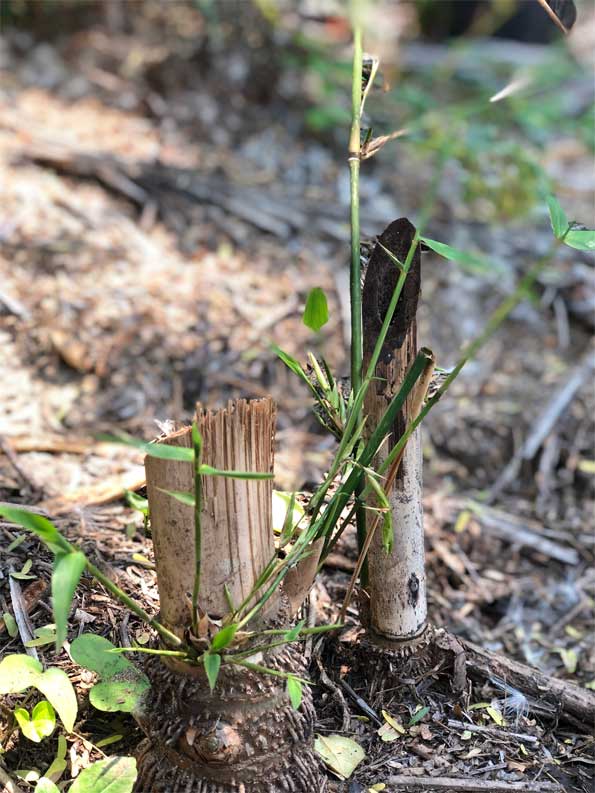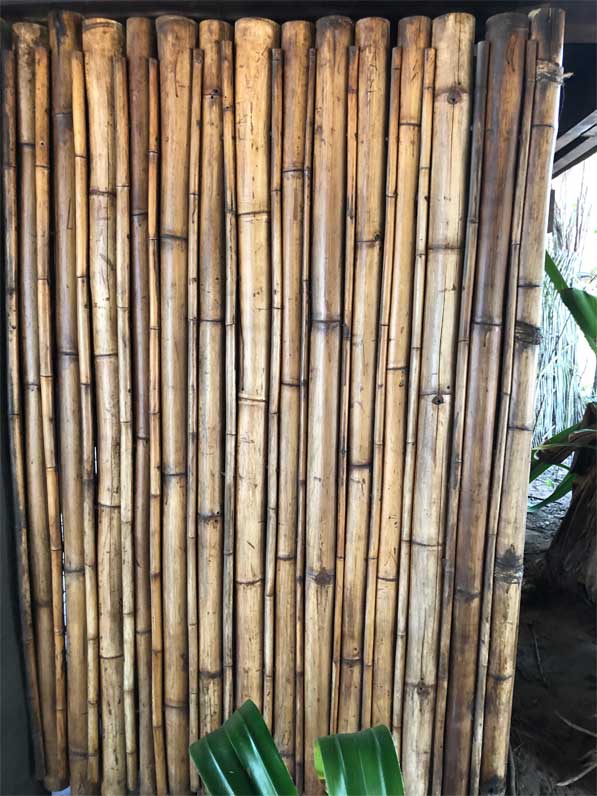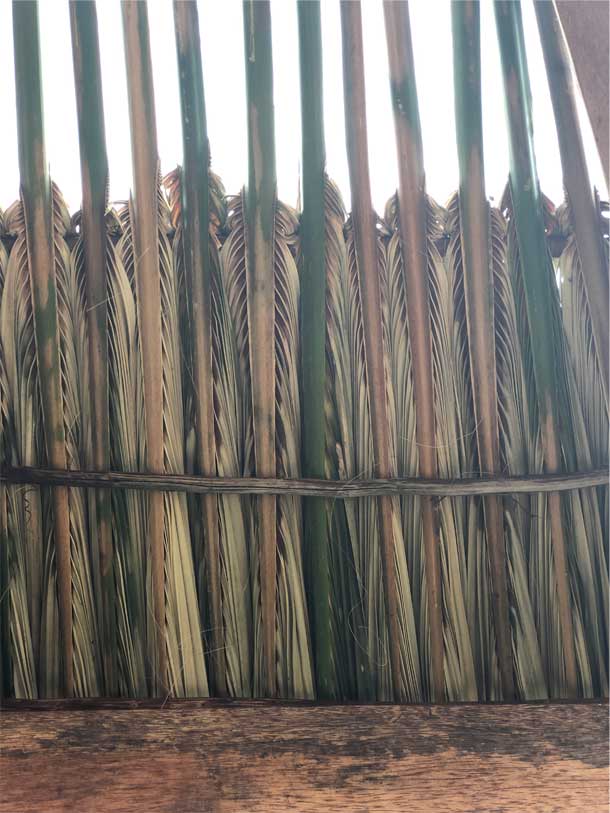At both Playa Viva and Casa Viva, we take pride in designing and building natural structures to minimize the impact on our environment — and to maximize these structures’ sustainability. Our permaculture team also plants and maintains abundant and local plant systems that allow us to harvest our own bioconstruction materials on site. And we use local labor and resources to not only build our infrastructure but to support our community.
We want to help curb the pull felt in our pueblo, and in rural communities around the world, to construct primarily with concrete — a material with an enormous carbon footprint. A generation ago, homes in Juluchuca and in nearby Rancho Nuevo were built in the traditional wattle and daub style using materials from the local ecosystem. These homes were constructed with the hands of multiple generations of the same family.
Modernism tells communities like ours that building with earth, clay, straw and cow manure are antique techniques. Ones that should be forgotten and replaced. However, our regenerative boutique hotels (and our philosophy toward sustainability in general) seek to remind our team members, our community, and our guests the value of local knowledge, of working with our hands and together in community, and turning what many consider waste (coconut hulls, cut up straw) into tasteful walls, common spaces, and roofs.
The Story Behind Being Made in Mexico
When choosing materials, Playa Viva sets the standard for “Made in Mexico” and “all natural.” As a result, each corner of the hotel contains the handiwork of local artisans and a history, both natural and cultural, of the country. From fossilized sea stones to an ancient building technique gaining popularity worldwide, every structure and fixture tells a story.
TECHNIQUES
Natural building, or bioconstruction, is a discipline within the world of architecture, building, and permaculture. It seeks to integrate infrastructure into the natural environment and ecosystem where a building or project exists and to connect members of the build team to a sense of place.
Cob
Cob is an ancient building technique that utilizes clay, sand and straw (or other locally sourced fibers). Cob homes are commonplace throughout Europe, in parts of Mexico and around the world. The raw materials are mixed thoroughly together, in many cases with the feet of the builders young and old alike, and applied wet onto the walls. In the common spaces at Playa Viva, you will see three different cob wall mixtures. The color variations come from the clay base used. When building the Playa Viva walls, the construction team collected clay from the veins alongside local riverbanks and roads, identifying a rainbow of clays from bright orange to deep purple. The team experimented with mixing in other organic materials such as shells, manure and plant detritus to change the aesthetics and durability.
As our farm infrastructure continues to develop, we plan to further explore these techniques. Learning from the success stories and asking members of our community to remind people of the healing powers of working with earth. There is nothing comparable to the accessibility and resiliency of these structures.
If you, your children, or someone you know is interested in getting your hands dirty with us, reach out about our Volunteer Program (3 month minimum stay) or inquire about our work before you book your next trip!
Wattle and Daub
Wattle and daub traditionally consists of a woven latticework of flexible wood or bamboo (called wattles) filled in and covered with a mixture of mud, clay, animal dung and chopped straw. Through a “truth window” at Casa Viva, you can sneak a peek inside our walls to see where we experimented with finding a use for the many coconut hulls that litter our landscape. We stacked this free resource thick and high between bamboo frames. Then covered the earthen walls with cob and varying natural plasters.
MATERIALS
Wood
Wood is an abundant material in our area that we use extensively for our hotel rooms, common spaces, and yoga platforms. This incredible, renewable and relatively easy-to-use resource is a mainstay in our building infrastructure. All the wood that we utilize in our structures is sourced and milled in our region and oftentimes collected from felled trees after big storms roll through.
Clay
This plentiful material is one of mankind’s oldest building materials. It is used in most if not all of our buildings. See if you can’t find the hand-designed dancing figures on a wall during your next stay at Casa Viva in Troncones. Clay has enjoyed a resurgence in recent years throughout the world as builders and homeowners better understand the variety of benefits of using this ubiquitous material. Mexico has a rich history of building with earth using techniques such as wattle and daub and Adobe. We are proud to be a part of the movement of revaluing earth as a commonly used building material in our adopted country.
Straw/Natural Grasses
If you look closely at the walls at Playa Viva, you can identify this local resource in the plasters and inside the structural integrity of our open air structures. The materials are free and ample in our environment. To use them is to value them in new, revitalized, and regenerative ways, and more than likely, prevent them from being burned.
Regenerative practices are rooted in turning problems into solutions. What better way than to turn trash into art? In cob construction, the straw/grass acts as the rebar would in a concrete structure. It essentially holds everything together. In this case our structures, but perhaps in the future as more people begin working with it, will also hold together our larger community.
Bamboo
Bamboo has become one of our favorite building materials over the years. Even though at this point in our story we have purchased much of the bamboo that we build with from other farms in Mexico, we have also planted multiple patches and species of this
magical grass on our reserve. We use it for a variety of building and non-building applications.
Bamboo’s versatility, functionality and flexibility are unbelievable. When you visit Playa Viva, you will see that we use bamboo for just about everything, from light fixtures in the pathways to furniture and tunnels draped in passion fruit plants.
Palm Leaves
Fronds from the native palm, Sabal mexicana, create natural waterproof and resilient thatched roofs, which you will find on all of the casitas and beachfront palapas at Playa Viva. The fronds are cut six days before they are used, dried in open fields under the Mexican sun, and then placed in layers beginning at the base of roof beams. The main Playa Viva architect specifically designed the palapa roof frames for maximum earthquake resilience. (The treehouse designed by Kimshasa Baldwin is equally sustainably sourced.) And as part of the native vegetation restoration project and for future use as a sustainable building material, our permaculture team replants native palms seasonally throughout the property.
On Your Next Visit
It is pretty easy to lose yourself among the creativity of the architecture in Playa Viva. You could spend a whole day exploring the landscape room by room. Each space with its unique touches and an opportunity to identify a locally sourced building material that you might have overlooked in its natural setting. We invite you to explore — to touch the walls, to lay on your back and observe the patterns of the thatch roofs, to walk through nature or explore the permaculture farm and find those patterns repeated again.
If this article inspired you or you have been thinking about building with earth where you live but do not know where to start, please reach out to our Permaculture Manager, Amanda Harris. She is happy to help connect you to builders in the United States and parts of Latin America.



